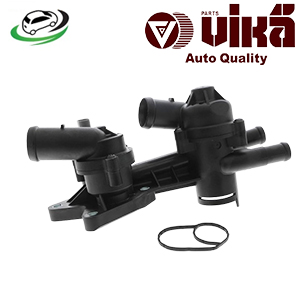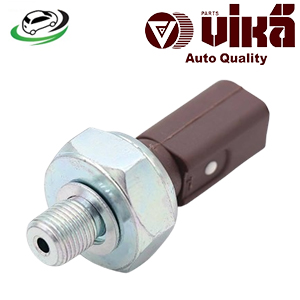Get Oil Pressure Sensor Switch Audi A4 2009-2015/A5 2008-2015/A6 2012-2014/Q5 2009-2015/TT 2011-2014 / VW Tiguan 2012-2015/VW Passat 2012-2015 038919081C
The oil pressure sensor switch is a critical component in an internal combustion engine that monitors the engine’s oil pressure. It plays a vital role in ensuring the engine’s longevity and performance by providing essential feedback to the driver and the engine control unit (ECU) about the oil pressure status. Let’s delve into its function, importance, types, operation, and maintenance.
Function and Importance
The primary function of the oil pressure sensor switch is to measure the oil pressure in the engine and communicate this information to the vehicle’s dashboard and the ECU. The oil pressure is crucial because it ensures that the engine’s moving parts are adequately lubricated, reducing friction and preventing wear and tear. Without proper lubrication, the engine can overheat and suffer significant damage, leading to costly repairs or even complete engine failure.
Types of Oil Pressure Sensor Switches
There are two main types of oil pressure sensor switches: mechanical and electrical.
1. Mechanical Oil Pressure Switches
Mechanical oil pressure switches are simple devices that directly measure the oil pressure and provide a mechanical signal. They typically consist of a diaphragm or piston that moves in response to changes in oil pressure. When the oil pressure reaches a certain threshold, the movement of the diaphragm or piston activates a switch, triggering a warning light on the dashboard.
2. Electrical Oil Pressure Sensors
Electrical oil pressure sensors, also known as oil pressure senders, are more sophisticated and provide more detailed information about the oil pressure. These sensors convert the oil pressure into an electrical signal that is sent to the ECU. The ECU then processes this information and can display the oil pressure reading on the dashboard or use it to adjust engine parameters for optimal performance.
Operation of Oil Pressure Sensor Switches
The operation of an oil pressure sensor switch involves several key steps:
- Oil Pressure Measurement: The sensor is typically located near the oil filter or the oil pump, where it can accurately measure the oil pressure. In mechanical switches, the oil pressure directly acts on a diaphragm or piston, while in electrical sensors, a pressure-sensitive element, such as a strain gauge or piezoelectric crystal, converts the pressure into an electrical signal.
- Signal Transmission: In mechanical switches, the movement of the diaphragm or piston activates a switch that completes an electrical circuit, illuminating a warning light on the dashboard. In electrical sensors, the pressure-sensitive element generates an electrical signal proportional to the oil pressure, which is transmitted to the ECU.
- ECU Processing: The ECU receives the electrical signal from the oil pressure sensor and processes it to determine the current oil pressure. If the oil pressure falls outside the normal range, the ECU can trigger a warning light on the dashboard or take corrective actions, such as adjusting the engine’s operation to prevent damage.
- Driver Notification: The dashboard warning light or gauge provides the driver with real-time information about the oil pressure. If the warning light comes on, it indicates that the oil pressure is too low or too high, and the driver should take immediate action to avoid engine damage.
Maintenance and Troubleshooting
Regular maintenance and troubleshooting of the oil pressure sensor switch are essential to ensure accurate readings and proper engine operation. Here are some key maintenance tips and troubleshooting steps:
- Regular Inspection: Periodically check the oil pressure sensor switch and its wiring for signs of wear, damage, or corrosion. Replace any damaged components to ensure accurate readings.
- Oil Level Check: Ensure that the engine oil level is within the recommended range. Low oil levels can cause inaccurate readings and trigger false warnings.
- Oil Quality: Use the recommended oil type and change the oil at regular intervals. Contaminated or degraded oil can affect the performance of the oil pressure sensor switch.
- Sensor Testing: If the oil pressure warning light comes on, test the sensor to determine if it is functioning correctly. Use a mechanical oil pressure gauge to verify the actual oil pressure and compare it with the sensor’s readings. If there is a discrepancy, replace the sensor.
- Wiring and Connectors: Check the wiring and connectors for any loose connections, frayed wires, or corrosion. Clean and secure all connections to ensure proper signal transmission.
Common Issues and Solutions
Several common issues can affect the performance of the oil pressure sensor switch, including:
- Faulty Sensor: A malfunctioning sensor can provide incorrect readings or fail to trigger the warning light. Replace the faulty sensor to restore accurate oil pressure monitoring.
- Oil Leaks: Oil leaks can reduce the oil pressure and cause false warnings. Inspect the engine for any signs of oil leaks and repair them promptly.
- Clogged Oil Passages: Sludge or debris can clog the oil passages, reducing oil flow and pressure. Regular oil changes and using high-quality oil can prevent clogging.
- Electrical Issues: Faulty wiring, loose connectors, or corroded terminals can disrupt the signal transmission. Inspect and repair any electrical issues to ensure proper sensor operation.
Follow us on Facebook for more parts.



